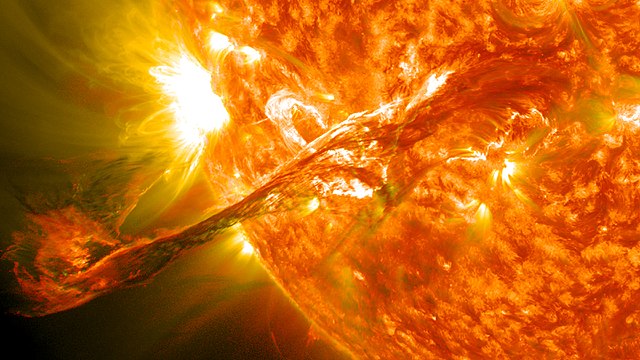A coronagraph is a telescopic attachment designed to block out the direct light from a star or other bright object so that nearby objects – which otherwise would be hidden in the object's bright glare – can be resolved. Most coronagraphs are intended to view the corona of the Sun, but a new class of conceptually similar instruments are being used to find extrasolar planets and circumstellar disks around nearby stars as well as host galaxies in quasars and other similar objects with active galactic nuclei (AGN).
Coronagraph at the Wendelstein Observatory
Direct image of exoplanets around the star HR8799 using a vector vortex coronagraph on a 1.5 m portion of the Hale telescope
A corona is the outermost layer of a star's atmosphere. It is a hot but relatively dim region of plasma populated by intermittent coronal structures known as solar prominences or filaments.
The solar corona with its coronal streamers streaching out, as well as solar prominences (in red) along the limb of the earthshine illuminated Moon during a total solar eclipse.
Image from TRACE at 171Å wavelength (extreme ultraviolet) showing coronal loops
Image taken by the Solar Dynamics Observatory on October 16, 2010. A very long filament cavity is visible across the Sun's southern hemisphere.
On August 31, 2012, a long filament of solar material that had been hovering in the Sun's outer atmosphere, the corona, erupted at 4:36 p.m. EDT






